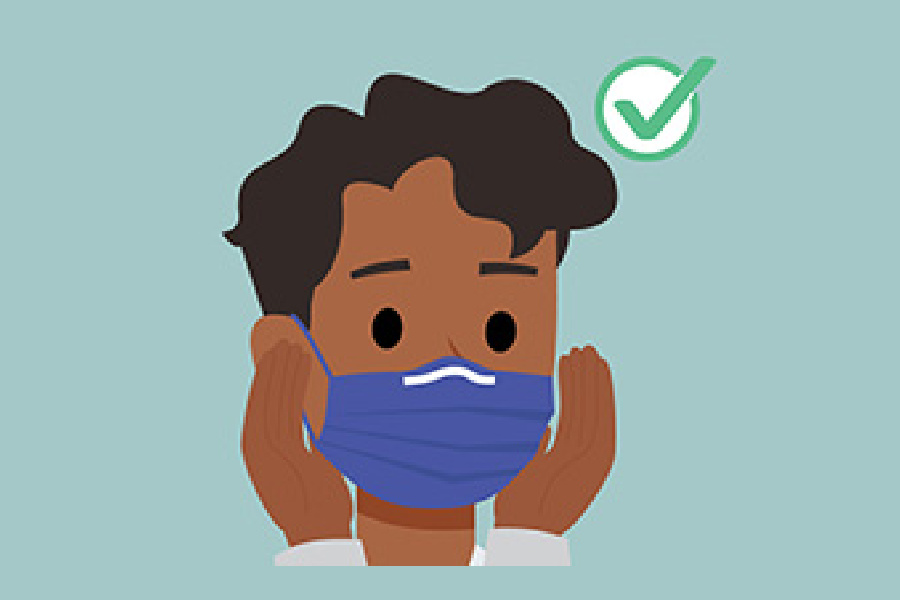After 18 months (sigh) it’s now clear that we’re past the point of “any mask is better than nothing” for preventing Covid spread, especially with the Delta variant here. In fact, just this weekend, the CDC issued new, specific recommendation about proper masking that has some very helpful info. And some of it is different than what you think you might know.
Remember: medical regulations and health guidelines change all the time, because as time goes on, scientists gather new data that can inform more knowledgeable recommendations.
This is good! this means scientists are doing their jobs well!
(Case in point: there used to be smoking sections on airplanes. And we used to think that eating boxes of Snackwells wouldn’t “make you fat” because they were fat free. Ha! Good times.)
Top image: US Center for Disease Control
This post may contain affiliate links and some purchases may generate a small commission that helps support our team at no additional cost to you.
The right kind of face mask for kids
According to the CDC, the right kind of face mask is important. These include:
-a surgical mask
-a N95/KN95 mask
-a cloth mask, provided it’s multi-layered from fabric that’s breathable and tightly woven (it should block light when held up to a bright light source), plus a nose wire for proper fit.
It’s that very last point that’s getting extra attention right now: Proper mask fit has a huge impact on protection for both the wearer and those around them.
This is an especially important matter for parents.
One simple tip to get kids’ face masks to fit better.
The CDC has an entire page of tips for improving mask fit and I’ve found that the best, simplest way to adapt any surgical masks you might already own, is to tie knots in the ear loops.
This is a trick that my own 14 year old has used for the past year because she’s smaller and the standard size face masks don’t always fit her tightly enough.
I will just say that sometimes, tying the knot close to the mask itself can create more of a gap around the face, and make the ear hooks more likely to fall off — it depends on your children’s face, ear size, and so on so you might have to play around a little.
What my daughter does is simply tie a knot at the ends of the mask so she still gets the elasticity of the ear bands, for a snug fit. It works for both KN95s and for surgical masks.
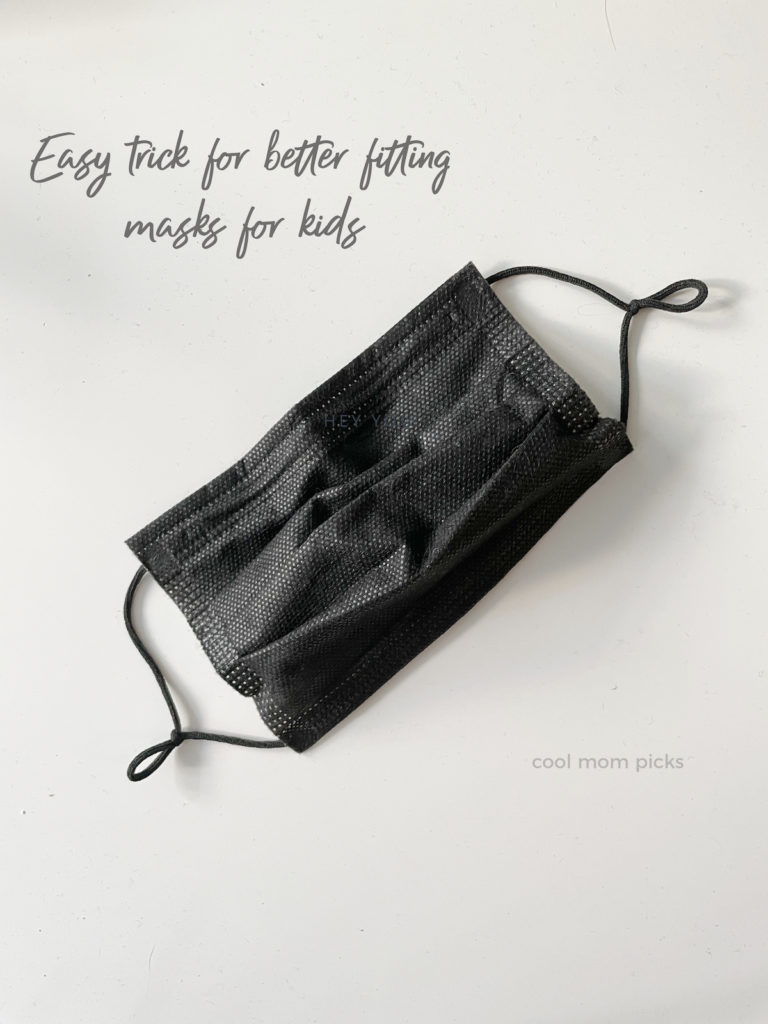
This is a mask I grabbed off a wall hook just this second, as-is and took a picture. You can see the pinch at the bridge of the nose, from the nose wire. (If you need to retro-fit a lot of existing masks you already own, you can order tons of nose wires on Amazon affordably.)
In fact, wearing a tighter fighting mask like this is so comfortable, my daughter shared plenty of stories of friends at summer camp this year who accidentally dove into the lake or took showers with masks on, because they completely forgot they were wearing a mask in the first place.
(In other words no, mask are really not “traumatic” for kids as I mentioned in this podcast episode, any more than seat belts or bike helmets are traumatic for kids.)
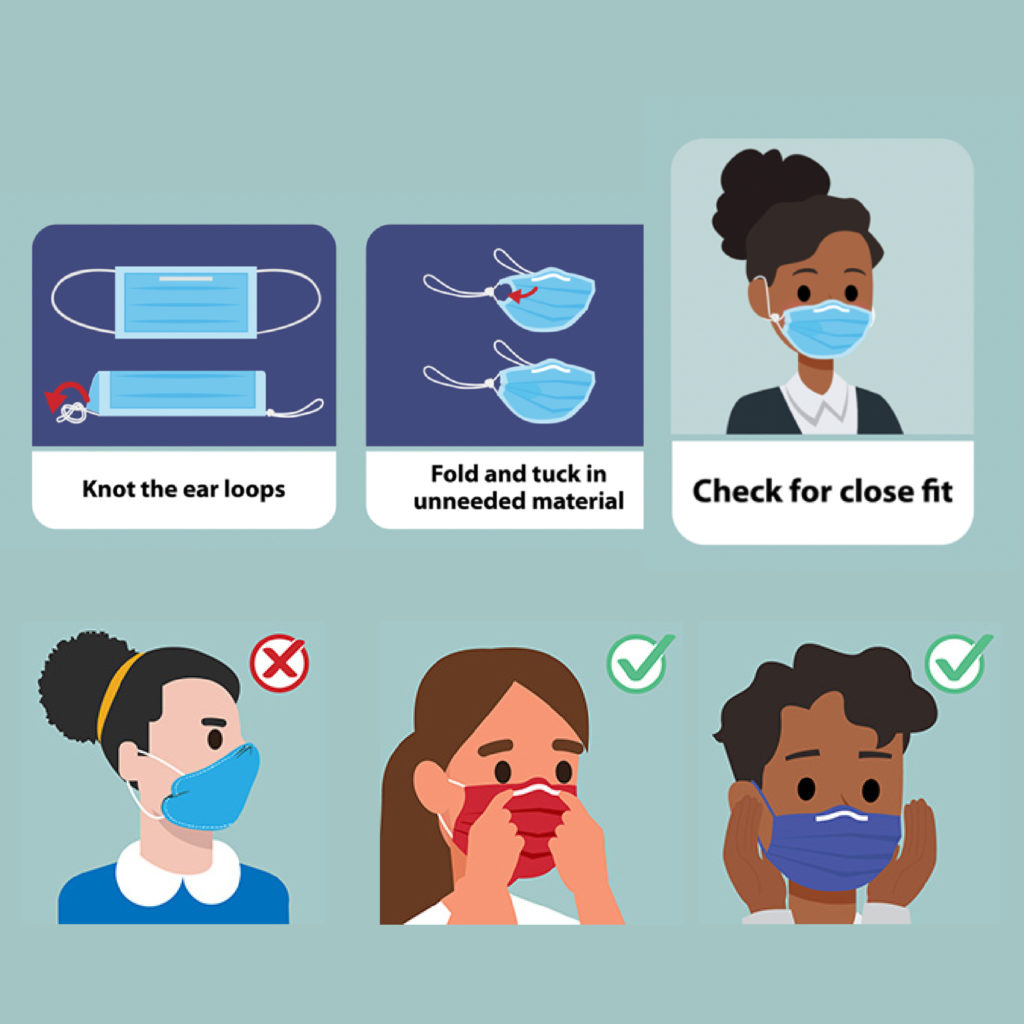 Via the CDC
Via the CDC
Or, try kid-sized face masks to begin with
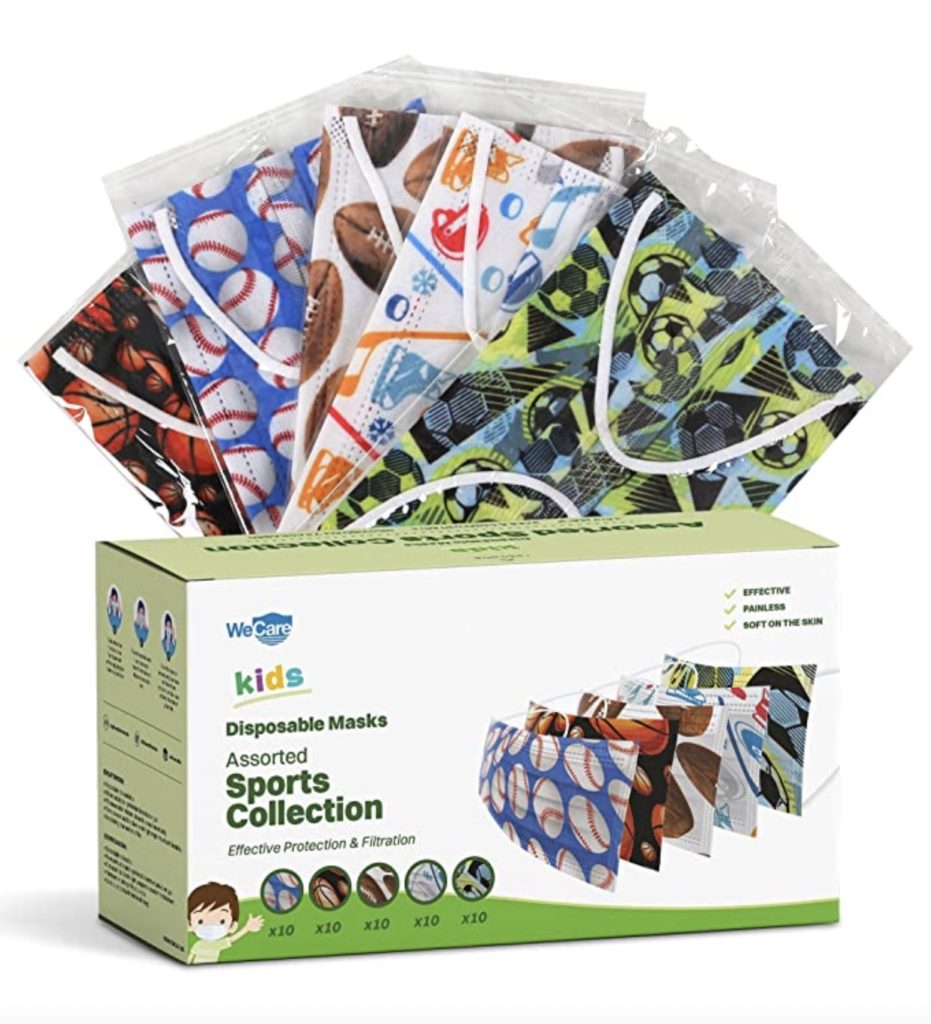
The kid sized disposable face masks from doctor-recommended WeCare come in lots of cute patterns and colors, and are under $25 for a pack of 50
You can also order kid-sized surgical masks or KN95s like the ones we shared in this post, because they’re designed for smaller faces and shorter ear-to-ear distance. They include the nose wires built right in.
More about mask fit and how it impacts Covid spread
If you’d like more infographics to share on social media or just for your own reference, I was happy to discover these put together by a team of researches at Columbia University on their site, WearingPPEiscaring.org.
Big h/t to Dr. Alex Huffman on Twitter for this site. He’s a bio-aerosol scientist and chemistry department professor at University of Denver offering tons of helpful links and facts on his feed, if you’re looking for a great new follow.
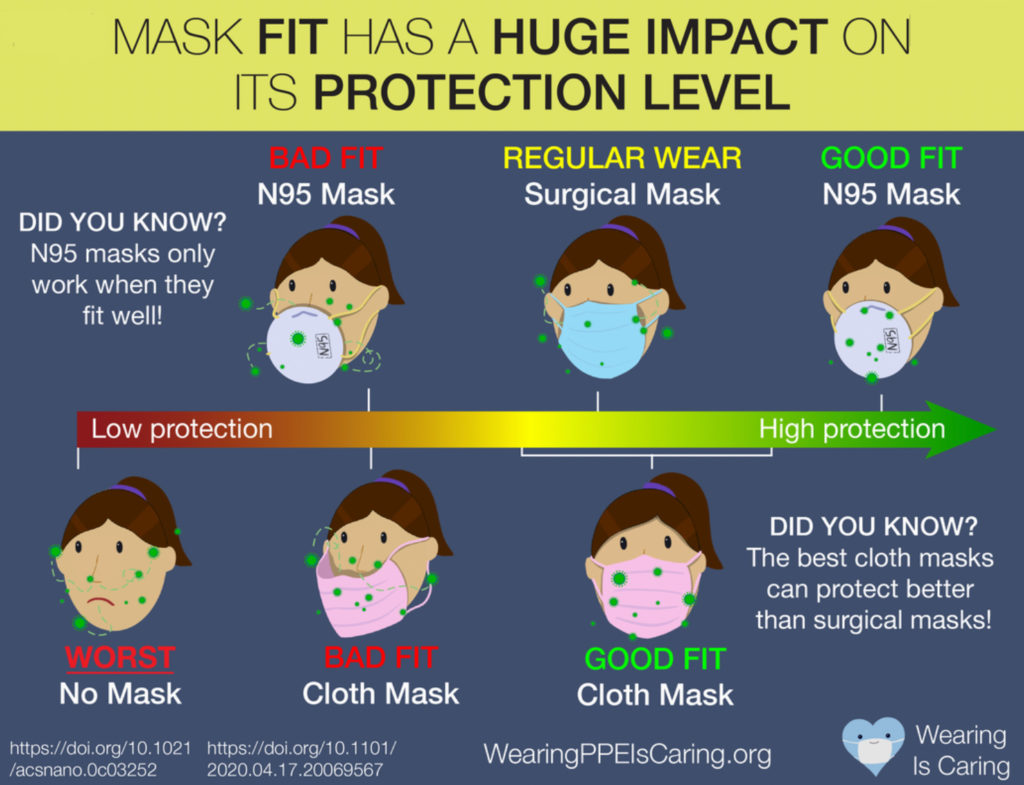
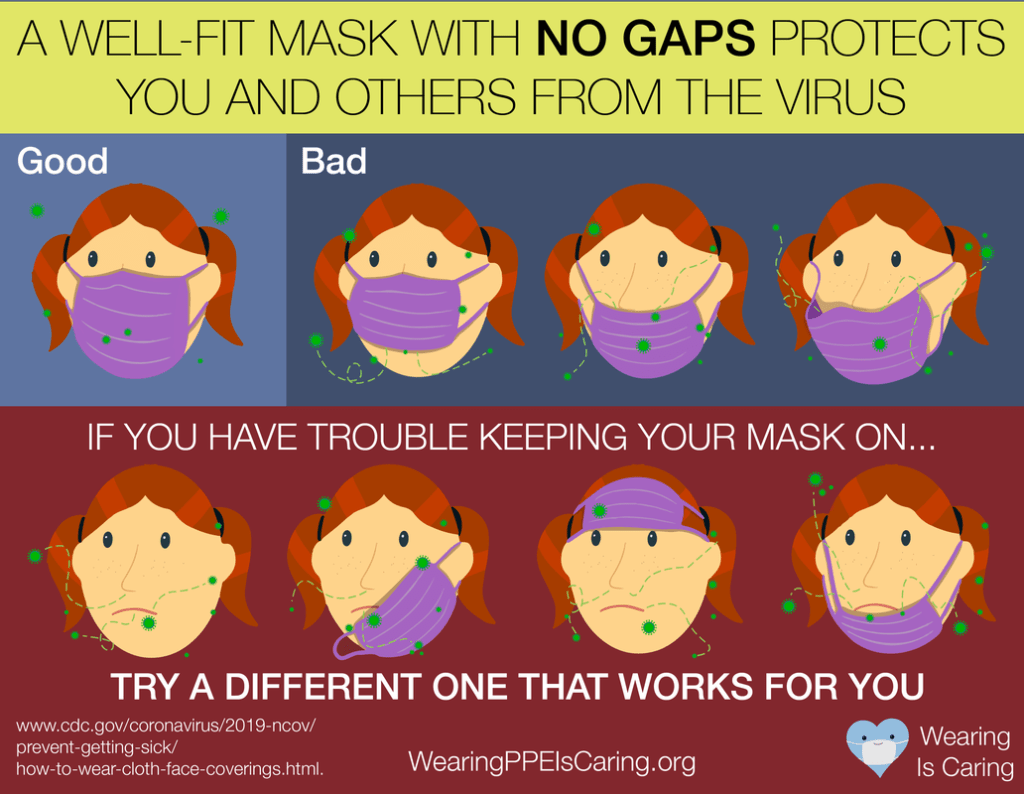
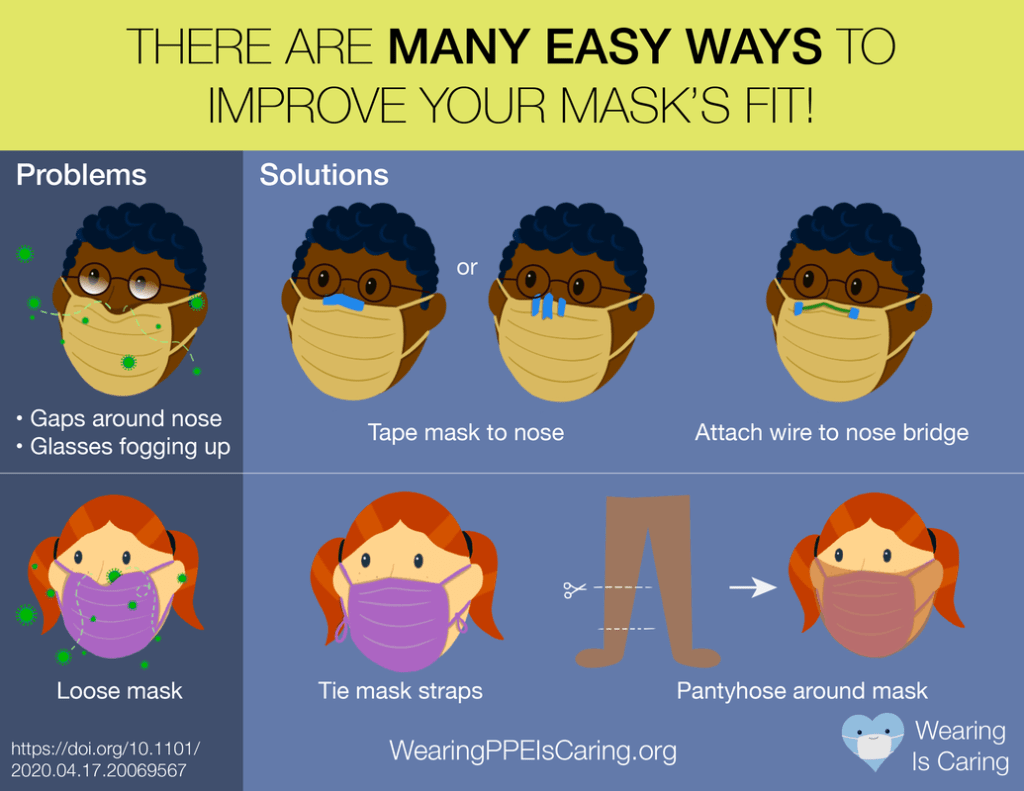
As you can see in this last graphic, the mask straps are also shown tied in a way that keeps the ear hooks stretchy and right-sized.
Give it a try.
Note: Of course we’re not doctors, just caring, engaged moms who read all the helpful facts from well-vetted sources that we can, with the hopes that we help you too. Our goal is simply to beat this stupid pandemic and get back to the real normal, from “the new normal,” you know? As always, be sure to talk with your own pediatrician and read recommendations from trusted scientists, epidemiologists, and researchers.
